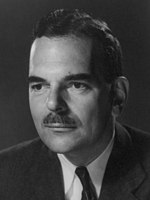1944_United_States_presidential_election_in_Louisiana
1944 United States presidential election in Louisiana
Election in Louisiana
The 1944 United States presidential election in Louisiana took place on November 7, 1944, as part of the 1944 United States presidential election. State voters chose ten[1] representatives, or electors, to the Electoral College, who voted for president and vice president.
Ever since the passage of a new constitution in 1898, Louisiana had been a one-party state dominated by the Democratic Party. The Republican Party became moribund due to the disenfranchisement of blacks and the complete absence of other support bases as Louisiana completely lacked upland or German refugee whites opposed to secession.[2] Despite this absolute single-party dominance, non-partisan tendencies remained strong among wealthy sugar planters in Acadiana and within the business elite of New Orleans.[3]
Until the rise of Huey P. Long, post-disenfranchisement Louisiana politics was dominated by the New Orleans-based “Choctaw Club”,[4] which overcame Socialist, Wobbly, and Progressive challenges from the outlying upcountry, Imperial Calcasieu and Acadiana regions between the late 1900s and early 1920s.[5] The three presidential elections between 1916 and 1924 saw a rebellion in Acadiana over sugar tariffs and Woodrow Wilson’s foreign and domestic policies; however, the nomination of Catholic Al Smith in 1928 rapidly restored their Democratic loyalty without causing significant upheaval in the remainder of the state, which was too focused on control of black labour to worry about Smith’s Catholicism.[6]
Following the 1928 gubernatorial primary, Louisiana politics until Brown v. Board of Education would be governed by a system of coherent “Long” and “anti-Long” Democratic factionalism,[7] as the administration of Huey Long introduced significant economic reforms, which were strongly opposed by the remnants of the old Choctaws. During the first term of Roosevelt, Long sought to capture the Presidency for himself under a “Share-Our-Wealth” program involving the confiscation of wealthy fortunes, family allowances, and government storage of agricultural surpluses.[8] The Long and anti-Long factions would compete intensely in subsequent primaries, with many controversies, most critically involving New Orleans election officer Patrick Classic’s attempt to count ninety-seven ballots for anti-Long Hale Boggs in a House of Representatives primary in September 1940,[9] which reached the Supreme Court and established the right to regulate primary elections. Three years later, Louisiana’s lily-white one-party politics was shaken by Smith v. Allwright, which ruled white-only primaries as unconstitutional, and to which Governor Sam Jones responded saying
We’ve always handled that question [black disenfranchisement] — and always will[10]
Incumbent Democratic President Franklin D. Roosevelt carried Louisiana in a landslide, defeating Republican New York Governor Thomas E. Dewey by a margin of 61.20 points,[11] and sweeping every parish in the state. Nevertheless, indications of protest against Roosevelt’s policies were seen in the rural hill parishes where the Long dynasty had been strongest in the preceding fifteen years[12] — for instance in Long’s ancestral home of Winn Parish, Dewey won almost two-fifths of the vote, and in Winn and nearby Lincoln Parish, the Democratic vote share fell by almost one quarter from the 1940 election.[13]
As of 2020, this election marks the last time that a Democratic presidential nominee has carried Bossier Parish.[14] Plaquemines Parish and Lincoln Parish have both voted for a Democratic Presidential candidate only once since – for Bill Clinton in 1996 – whilst Caddo Parish and Claiborne Parish would not vote Democratic again until Clinton in 1992.[14] It also marked the end of a 64-year Democratic voting streak; four years later, the state would back Dixiecrat candidate Strom Thurmond instead of Democratic nominee Harry S. Truman. As such, this marks the last time that any presidential candidate would carry every parish in the state.


